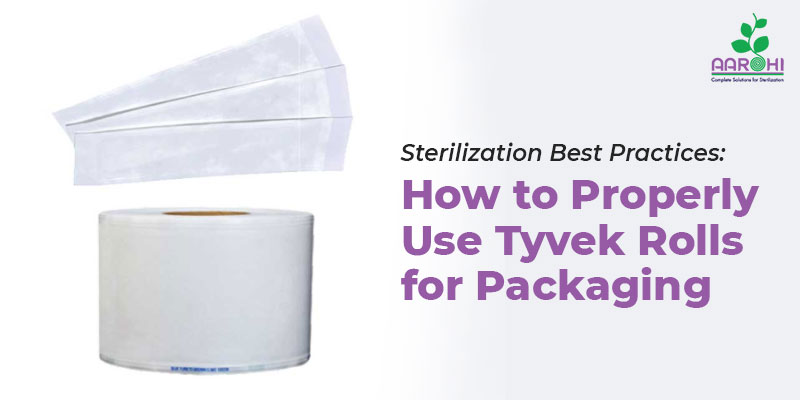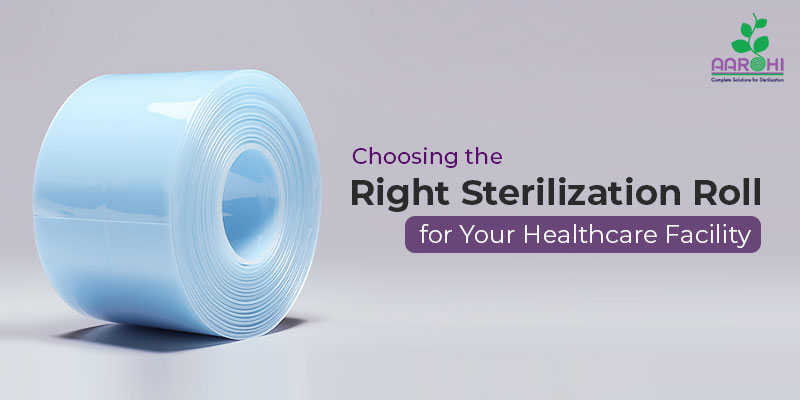Introduction
Sterilization pouches play a safety role in healthcare settings. It is important to properly load and seal the sterilization pouches because it affects the sterilization time of the placed item.
This is a complete guide for all healthcare professionals on how they can ensure safety by properly loading and sealing the sterilization pouches in an autoclave.
Here, we start!
What is a Sterilization Pouch?
Sterilization Pouches, also known as peel packs, are disposable packages used to place medical instruments during the sterilization process. It is made of durable materials such as medical grade paper and (remove) plastic (Add) Cast Polypropylene (CPP) that allow steam or other sterilants to penetrate and kill bacteria and other microorganisms.
Sterilization pouches are typically sealed with a self-adhesive strip (add) or using rotary sealing, and they may have indicators to show that the sterilization process is completed successfully.
Importance of the Sterilization Pouches
Sterilization pouches are of utmost importance for medical and surgical procedures. These pouches ensure that medical instruments and other equipment are carried out safely.
Sterilization pouches prevent any harm or spread of infection in healthcare settings and other environments where sterile equipment is needed.
Sterilization pouches are used in a variety of settings to prevent cross-contamination which can cause serious infections, especially in patients who are already sick or have weakened immune systems.
The proper sterilization of these pouches will ensure:
- Destroying microorganisms to stop their growth and infection
- Killing bacteria by chemical agents
- Easy handle of sterilized items
- To maintain the sterility of the placed
Sterilization pouches are ideal for medical surgeries to protect healthcare workers from harmful infections.
Uses of Sterilization Pouches
Sterilization pouches are single-use products. The primary uses of sterilization pouches include storing, transporting, and packaging sterile items.
Sterilization pouches are compatible with all types of sterilization methods such as Ethylene Oxide(EO), Gamma, Electron-beam, steam(under controlled conditions), and low-temperature oxidative sterilization processes.
The most common use of sterilization pouches includes the following areas:
- Healthcare
- Industrial
- Laboratory
Hospitals, dental clinics, veterinary hospitals, and other healthcare settings use sterilization pouches to sterilize surgical instruments, surgical drapes, and other medical equipment.
Laboratories use sterilization pouches to sterilize Petri dishes, test tubes, and other laboratory equipment. Whereas, Industrial settings use sterilization pouches to sterilize medical devices, food processing equipment, and others.
Here are some specific types of times to be sterilized with sterilization pouches:
- Surgical Instruments
- Surgical Drapes
- Dental Instruments
- Veterinary Instruments
- Electronic Equipments
- Aerospace Components
- Pharmaceutical Equipment
Sterilization pouches are important to control infections in the above-shown settings. In addition to these specific uses, sterilization pouches can also be used in any other settings where keeping an item sterilized is necessary, such as the clothing and textile industry, cosmetic manufacturing equipment, personal protective equipment, etc.
Choosing the Right Sterilization Pouch
Maintaining the sterility of medical equipment is essential. Before you choose any sterilization pouch, make sure you consider the following factors.
1. Size and Type of Pouch
The pouch should be of the correct size for the item to be sterilized. Choose a pouch that is slightly larger than the item to be sterilized to ensure a secure seal. There are two main types of sterilization pouches - peel pouches and self-sealing pouches. Peel pouches must be sealed with the heat-sealer while self-sealing pouches can be sealed with the hand.
2. Material
The pouch material should be of high quality, durable, and able to withstand high temperatures and pressure. The most common materials used for sterilization pouches are medical-grade paper and plastic.
3. Compatibility with the Autoclave
The pouch must be compatible with the autoclave that is being used. Some pouches are designed for use with steam sterilization, while others are designed for use with other sterilization methods, such as ethylene oxide gas sterilization.
4. Sealing and Indicators
The pouch must be able to be sealed securely to prevent contamination. The pouch should also have indicators to show that the sterilization process has been completed successfully.
Apart from these factors, we suggest choosing a pouch that is approved by a recognized regulatory body, such as the FDA or ISO. Make sure that the pouch can handle sterilized items without overcrowding and check the expiration date before using.
Loading of Sterilization Pouches
Here are the things you should take care of while loading the sterilization pouches.
- Overfilling and Underfilling
- Spacing the Items within the Pouch
- Removing Air from the Pouch
When loading sterilization pouches, it is important to avoid overfilling and underfilling the pouches. Overfilling can prevent the sterilant from reaching all surfaces of the items being sterilized, while underfilling can allow the items to move around inside the pouch, which can damage the pouch and compromise sterility.
When spacing the items within the pouch, do not cover more than 75% of the packaging volume. The items inside the pouch should be spaced evenly. This will allow steam to circulate freely and sterilize all of the items inside.
It is also important to remove all of the air from the pouch before sealing it. This can be done by hand or using a vacuum sealer. Removing the air from the pouch will help to ensure that steam can penetrate and sterilize all of the items inside.
Sealing of Sterilization Pouches
- Type of Seal
- Checking the Seal
The type of seal that is used will depend on the type of sterilization pouch and the autoclave that is being used. Some autoclaves require a specific type of seal, such as a pressure-sensitive seal or a heat-sealed seal. It is important to check the manufacturer's instructions for the autoclave to determine the required type of seal.
Once the pouch is sealed, it is important to check the seal to make sure that it is tight and secure. If the seal is not tight and secure, steam can leak into the pouch and contaminate the items inside. To check the seal, look for any gaps or holes in the seal. If you see any gaps or holes, the pouch must be resealed.
How to Load and Seal Sterilization Pouches in an Autoclave?
To properly load and seal the sterilization pouches in an autoclave, use a pouch rack to ensure the pouches are properly spaced and that steam can circulate around freely. Avoid placing pouched directly on the bottom of the autoclave chambers. For better integration, follow the manufacturer’s instructions for the sterilization pouches and the autoclave.
For Your Safety!
For us, safety always comes first and our sterilization pouches tick that mark. In our manufacturing process, we make sure to use high-quality materials that provide a higher level of protection to our clients. Ensure your safety with Aarohi Sterilant!




